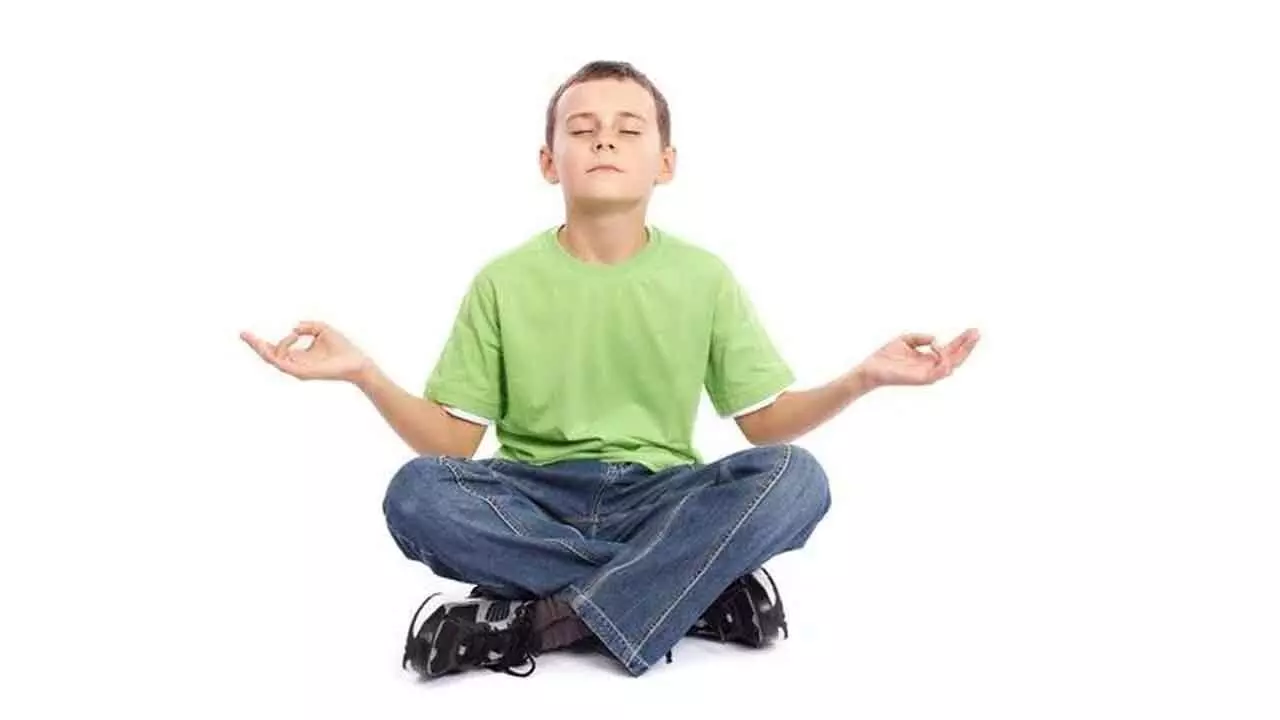Live
- Thousands Pay Tribute to Lance Havaldar Anoop Poojary in Udupi
- People should take advantage of Pradhan Mantri Surya Ghar: Muft Bijli Yojana: PM
- Tata Group to create 5 lakh manufacturing jobs over next half decade: N. Chandrasekaran
- Hansika’s charm remains undeniable
- Housing Sales Decline 4% in 2024, but Sales Value Rises 16% in India’s Top Cities: ANAROCK
- VHP to launch campaign from Jan 5 to free temples from govt control
- Israeli far-right minister visits flashpoint Jerusalem holy site, sparking criticism
- Keralites gulp down liquor worth Rs 152 crore over Christmas period
- Nani exudes style & intensity in ‘HIT 3’ new poster
- Journalist-writer Dr Rentala Jayadeva comes with a book ‘Mana Cinema.. First Reel’
Just In
Mindfulness & meditation to manage stress, anxiety for youth


Mindfulness and meditation offer young people effective ways to manage stress and anxiety in a world that can often feel overwhelming. By adopting these simple practices, youth can cultivate inner peace, resilience, and a greater sense of balance in their daily lives
In today’s fast-paced world, many young people face growing pressures and expectations, often resulting in heightened levels of stress and anxiety. With academic pressures, social media influence, peer expectations, and the uncertainties of the future, it’s easy for youth to feel overwhelmed. Mindfulness and meditation are two powerful tools that can help manage these feelings. These techniques are not only simple to practice but can also foster emotional resilience, improve focus, and promote overall well-being.
What is mindfulness?
Mindfulness involves being fully present in the moment and acknowledging thoughts, emotions, and sensations without judgment. Instead of allowing the mind to wander into worries about the future or dwell on past regrets, mindfulness helps individuals focus on the present. This practice is especially important for youth, who often struggle with distractions, whether from technology or the various demands of life.
Benefits of mindfulness for youth
Mindfulness has been shown to significantly reduce stress, anxiety, and depressive symptoms in young people. By practicing mindfulness regularly, individuals can develop greater emotional regulation and improve their response to challenging situations. Other benefits include enhanced attention and focus, improved relationships, and better decision-making abilities.
Basic mindfulness techniques
Body Scan Meditation: This technique helps bring attention to different parts of the body, promoting relaxation and releasing tension. Start by lying down in a comfortable position. Slowly bring your awareness to each part of your body, starting from your toes and moving up to your head. Notice any areas of tension, and as you breathe out, imagine releasing that tension. This technique not only fosters relaxation but also strengthens the mind-body connection.
Five Senses Exercise: This is a grounding technique that involves focusing on the five senses to bring the mind to the present. It’s particularly helpful when feeling anxious. To practice, identify five things you can see, four things you can touch, three things you can hear, two things you can smell, and one thing you can taste. This simple exercise shifts attention away from anxious thoughts and helps center the mind in the moment.
The role of meditation
Meditation goes hand-in-hand with mindfulness and is a more structured practice of training the mind. Regular meditation helps calm the mind, reduce negative thinking, and increase self-awareness. For youth, incorporating meditation into their daily routine can lead to greater clarity, focus, and emotional balance.
Meditation techniques for youth
1. Guided Meditation: Guided meditations, often available through apps or online platforms, involve following a teacher’s voice as they lead you through a calming visualization or mindful practice. For beginners, this can be an excellent way to start meditating as it provides structure and guidance.
2. Loving-Kindness Meditation: This technique focuses on developing compassion, both for oneself and others. Start by sitting quietly and focusing on feelings of love and kindness. First, direct these feelings towards yourself by repeating phrases like “May I be happy, may I be healthy.” Then, extend these feelings towards others, such as friends, family, and even people you may find challenging.
3. Mantra Meditation: This involves repeating a word or phrase (mantra) to help focus the mind. The mantra can be anything that resonates, such as “peace” or “calm.” This practice helps block out distractions and allows the mind to focus solely on the repetition of the mantra, promoting relaxation and reducing anxiety.
Incorporating mindfulness and meditation into daily life
For youth to experience the full benefits of mindfulness and meditation, consistency is key. Starting with just 5 to 10 minutes a day can make a significant difference. It’s also important to approach these practices with patience, as it may take time to feel the effects. Creating a routine that incorporates mindfulness before or after stressful activities, such as studying or exams, can help manage stress proactively.

© 2024 Hyderabad Media House Limited/The Hans India. All rights reserved. Powered by hocalwire.com






